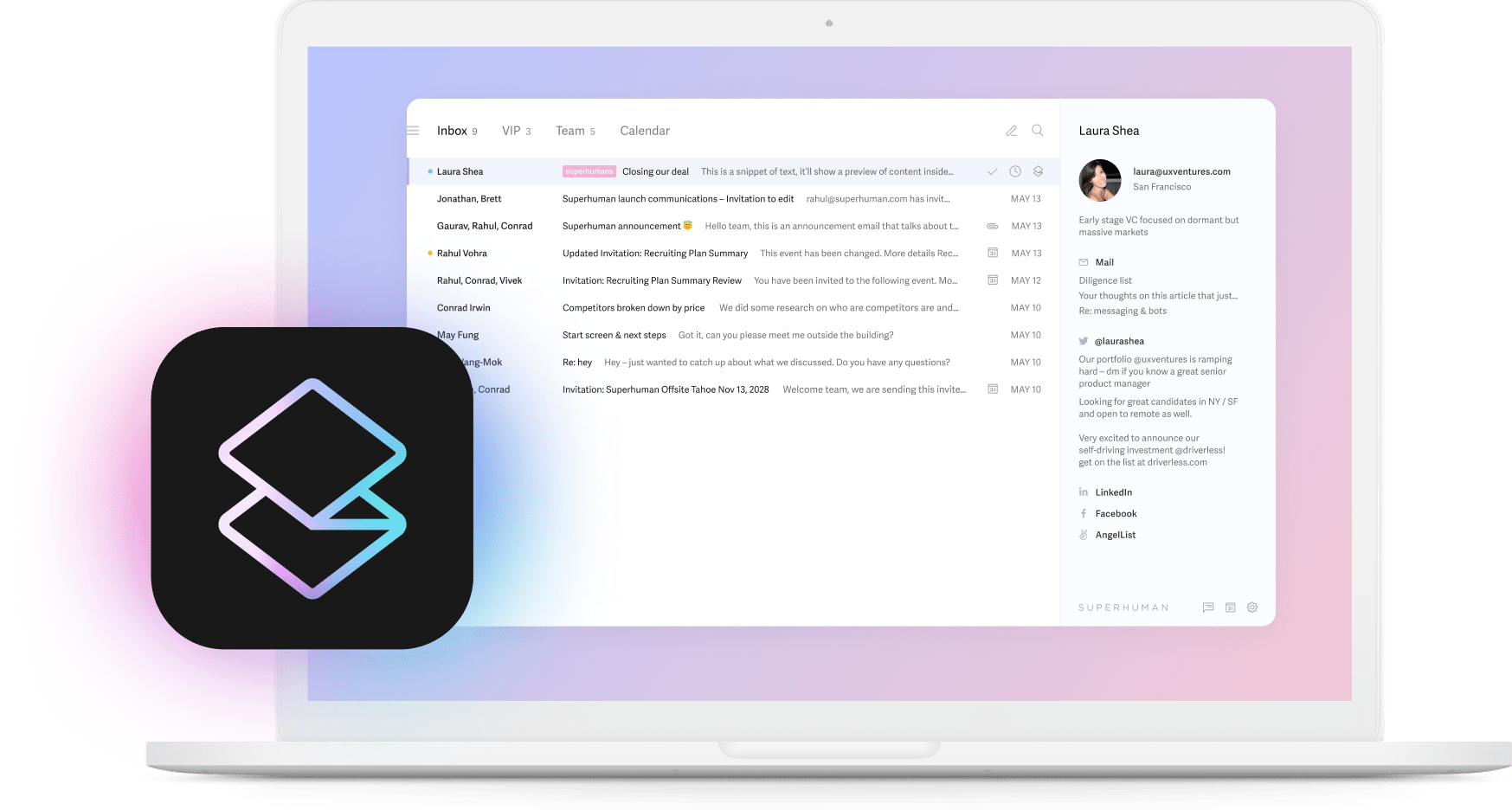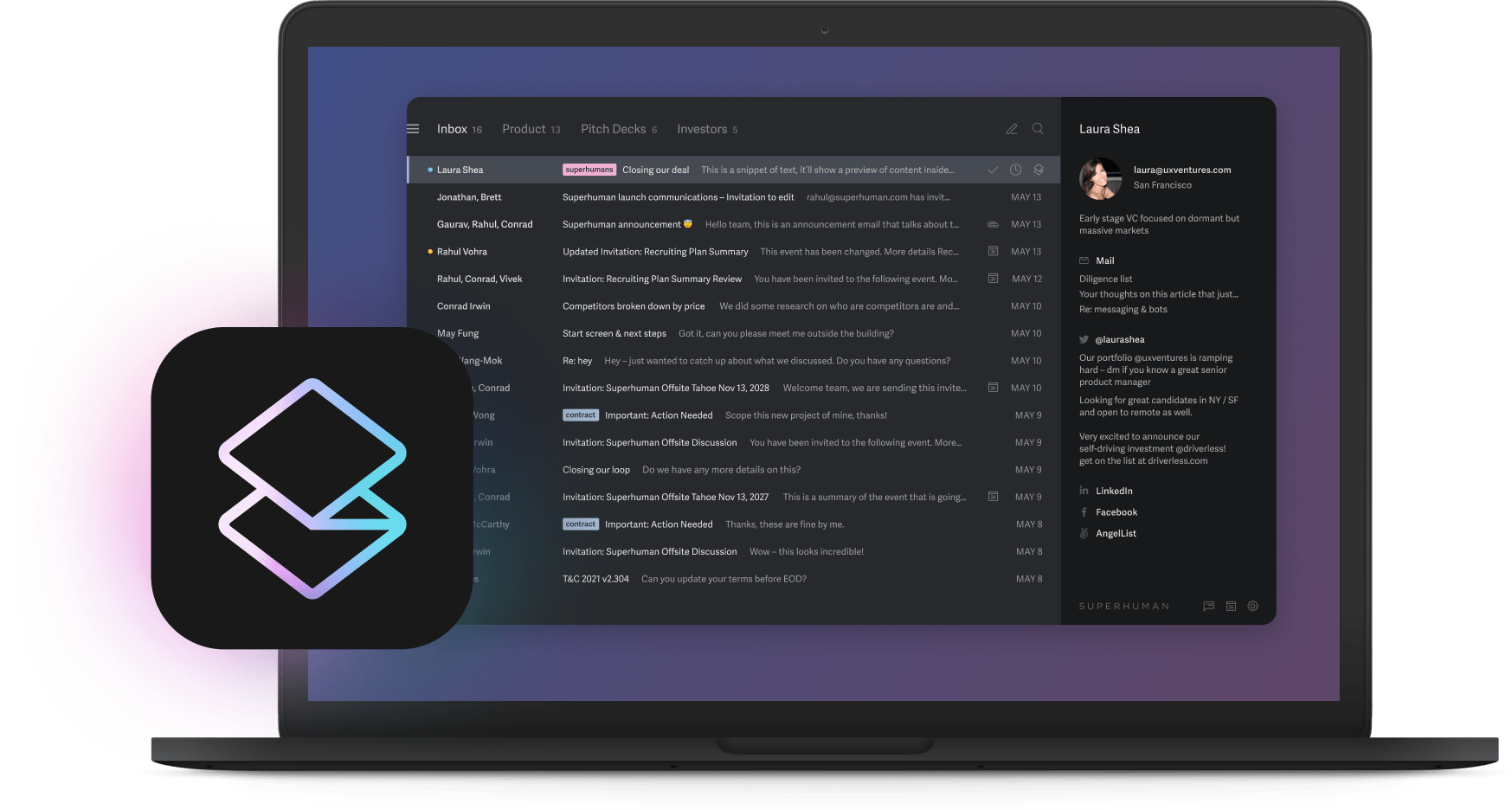
Leaving a job can feel like you're letting your boss or your team down, even if you know you're making the right move for your career.
The tricky part? Writing the resignation email.
This article will tell you how to write a resignation email that gets your message across politely.
Table of Contents:
How to write a resignation email?
Resigning from a job is a common experience, but it's not always easy. The real problem: How do you express your decision without making things awkward?
Quitting a job requires a careful and thoughtful approach. Here’s how to write a letter of resignation that clearly and respectfully communicates your decision.
Clear subject line
The recipient of your resignation email should not open the email and be surprised to learn you're leaving. Even worse, they shouldn't assume your email is unimportant or work-related and not open it right away.
That's where the email subject line comes in. Your email’s subject line should make it clear that you’re resigning from your job.
Here are some examples of subject lines you can use for a resignation email:
- [Your name] resignation
- Resignation from my role at [Company]
- It's time for me to move on from [Company]
- Leaving [Company] on a high note
- Moving on from [Company] to a new chapter
- Taking my next steps: resignation from [Job Title]
Further reading:
- Email format: How to format an email (+5 examples)
- 7 tips on how to write a good email (and banish sender’s remorse)
State your reasons for resigning
Be honest and maintain professionalism when expressing your reasons for resigning.
Focus on the positive aspects of your decision, such as personal growth, career development, or a new opportunity. Avoid dwelling on negative circumstances or criticisms.
If specific issues led to your decision, frame them diplomatically without blaming anyone. Keep it concise and to the point, avoiding unnecessary details.
Here’s a good example of framing your reasons for resigning:
This decision is not easy for me, but I believe it is the right step for my personal and professional growth. I have recently been offered a new opportunity that aligns with my long-term professional goals.
Specify the effective date of departure
In your email, let the recipient(s) know your last day of work. This establishes a clear timeline for the transition process and avoids any potential confusion.
If the date is flexible, let them know and ask for their input on when they'd like you to depart officially. But if you need your final day to be on or before a specific date, clearly communicate that so there's no confusion about when you're leaving.
If there are no explicit requirements about when to give the notice of resignation, send it according to the typical standard in your industry or location.
For example, in Europe, your notice period might be a month. In the US, two weeks' notice is typical for most positions. If you've been with your company for a long time or hold a very senior position, it's generally considered courteous to give more notice.
Express gratitude
Expressing gratitude is not only professional but also a great way to end your resignation email on a positive note. It reflects your appreciation for the opportunities and experiences you've had during your time with the company.
When expressing gratitude, be sincere and specific about your experiences. Focus on aspects like the support you received, any mentorship you enjoyed, or the opportunities that came your way.
Here’s how you can express gratitude in your resignation email:
I want to express my heartfelt gratitude for the incredible opportunities and experiences I've had during my time at [Company]. Your leadership and the entire team's support have played a pivotal role in my professional growth.
I truly appreciate the guidance and mentorship I've received, which has been instrumental in shaping my career.
Offer assistance during the transition period
Offering to help with the transition is a thoughtful gesture that won’t go unnoticed. It shows you're committed to being professional and leaving things in good order.
When offering help, be genuine and clear about the support you can give. You might mention your willingness to train a new employee, write down your tasks and processes, or assist with anything else needed for a smooth transition.
Here’s how you can frame this section:
I can offer to train my replacement, document the processes and tasks I handle, and provide any additional support needed during this transitional period. I aim to make the transition as easy as possible for the team, minimizing potential disruptions.
Please let me know how I can best support the transition process, and I am open to discussing the details further.
Write a professional resignation email instantly with Superhuman AI
Struggling to find the right words or spending too much perfecting your message?
Use Superhuman AI to draft your resignation email with ease and precision.
Enter a few key phrases, and let Superhuman AI craft a polished resignation email that reflects your unique style and tone, ensuring your email sounds just like you.
Superhuman AI tool goes beyond just composition—it corrects errors in real-time, boosting your typing speed by 30-50%. Keep typing and let Superhuman AI refine spelling, grammar, and clarity.
To get started, reload Superhuman, then hit Cmd+K (Mac) or Ctrl+K (Windows) → Activate Superhuman AI. To use Superhuman AI, just hit Cmd+J or Ctrl+J in any email.
Try Superhuman9 tips to write a professional resignation email
A resignation email should be simple, polite, and professional. Minus all the unnecessary details.
However, there's also information that's important to include to help ensure a smooth transition as you leave your current job. Follow these nine tips to write a formal resignation letter — and later, we'll put all these tips together in a sample resignation letter you can use as a template.
Don't send your resignation too soon
If you're resigning because you're taking a different job, make sure you don't send your resignation email until you've received and accepted a formal job offer (a verbal offer can still fall through!).
It can be tempting to hand in your resignation as soon as a new job seems imminent. Especially if you're excited about your new position and want to start immediately!
But remember that once you send your resignation email, you may not be able to take it back. If the new job falls through, you could be in a difficult position.
Follow your company's conventions
Before writing and sending your resignation, check to see what the usual convention is at your company for resignations (or if there's a documented process you should follow).
For example, even if you choose to share the news with your manager face-to-face, it might be standard procedure to follow up with an email summarizing that conversation to make it concrete.
The industry you work in, and the culture of your company and team, can also help guide how you give your resignation. In some places, an email resignation is perfectly acceptable, but in others, you may want to give a more formal resignation alongside the email version.
Send your resignation to the right people
When you're ready to send your resignation email, send it to your supervisor, but CC your human resources department or people team if you have one.
Further reading: CC vs BCC in Email: What do they mean and how to use them
Keep it simple, polite, and professional
Your resignation email shouldn't contain irrelevant details. Even if you're excited about leaving your current company or position, don’t let it show in your email. And never use a resignation email to complain or vent.
Remember: you can provide a reason for leaving, but it's not mandatory.
If you're leaving for a positive reason (like an exciting opportunity you couldn't turn down), then you might choose to mention that.
But if you're leaving because work is making you feel really stressed or unhappy, it's best to talk about it in an exit interview. This is where you can share details about your experience, especially if it's related to your mental health at work.
Maintaining professional relationships is sometimes more important than airing your grievances — keep that in mind when choosing when and what to divulge as you're leaving. And remember, it's always OK to keep your reasons vague (for example, just say you're moving on for "personal reasons").
Check your contract and handbook before you hit "send"
Before you send your resignation email; check your employment contract and employee handbook to see if there are any restrictions or requirements for your notice period.
Let HR know if you plan to follow up
You may have questions about employee benefits, unused vacation time, or other loose ends.
It's unnecessary to bolt these details onto your resignation email, but if you have questions, mention in your email that you plan to follow up with HR for more information (and make sure your HR department is CC'd on your resignation email).
Provide your personal contact information
Before signing off, provide your personal contact details so that your soon-to-be-former employer can reach you if needed.
This can be a phone number, personal email address, or even your mailing address — your former employer shouldn't contact you for work-related reasons after your last day but may need to contact you about paperwork or tax information.
Proofread your resignation notice
Always proofread any professional email message before you hit "send".
Sent an incomplete or error-filled resignation email by mistake? With Superhuman, you can use Undo Send and unsend an email within 30 seconds of sending it.
Follow up if needed
If you don't receive a timely response to your resignation email, be sure to follow up to make sure your message was received and read.
Not sure if your email was opened? Add a read receipt in Gmail or Outlook and you’ll know if and when your email was opened. Superhuman offers Read Statuses to check if your resignation email was read. Here’s how it works:
Resignation email templates
Still not sure how to write your resignation email from scratch? We've made some resignation email examples that can be adapted to almost any situation and help you be more effective.
With Superhuman, you can save this resignation email template (or any emails) as a Snippet, then insert it into an email message with a keyboard shortcut.
Formal resignation email template
Subject: [Your Name] — notice letter to resign from [Position]
Dear [Supervisor's Name],
I'm writing to give formal notice of my resignation from [Company Name].
My last day of employment will be [Date].
I want to sincerely thank you for all the opportunities I've experienced here. I gained so much experience and built relationships that will long outlast my time at [Company Name].
Optional to include: [Brief explanation of the reason for leaving].
I've attached a Google Doc listing my responsibilities and unfinished projects so they can be reassigned. I'm also happy to assist with reassigning my duties before my last day. Please let me know if there's anything else I can do to make the transition as smooth as possible.I can be reached at [Contact Information] after my last day.
Thank you again for everything.
Best regards,
[Your Name]
Template for announcing your resignation to your team
Subject: Leaving on a high note!
Dear [Team],
I wanted to let you all know personally that I've given my notice and will be moving on from [Company Name] on [Date of your last day].
This is not a decision that I came to lightly. I've had many wonderful experiences at [Company Name]. I've also been lucky to work with you, and my incredibly talented colleagues, and I'm so thankful for the relationships we've built during my time here.
I hope we can stay in touch, and don't be a stranger about reaching out any time you want to catch up. You can reach me at [LinkedIn link or other contact information].
I wish you all the best, and I'm cheering on [Company Name]'s future endeavors.
Sincerely,
[Your Name]
Resignation email: FAQs
These frequently asked questions help clarify when and how to use email in the resignation process and how to handle other everyday situations that might arise.
When is it OK to resign by email rather than in person?
Here's a good rule of thumb: if you and your manager or supervisor work together in person, you should deliver the news that you're resigning in person first then follow up with an email.
If you and/or your supervisor work remotely but are located in the same city, inviting them for coffee or lunch can be a good idea to break the news in person — especially if you have a good relationship.
Suppose you and/or your supervisor work remotely and live in different places. In that case, it's always appropriate to resign only by email — though you still might consider a 1:1 Zoom or GMeet to break the news to your manager before you send the email. Be sure to send the message directly to your supervisor, with HR and any other necessary contacts CC'd.
Can an employer choose not to accept your resignation?
The short answer is no. In the US, it's explicitly against the law for an employer to refuse to accept your resignation from a job (as is the case in many other countries).
Your employer can't stop you from leaving, but carefully check your employment contract for any rules or requirements you need to fulfill during your notice period; if you fail to follow the procedures outlined in your contract, you could put yourself at risk of legal action.
How do you tell your coworkers that you're leaving?
You should not copy your entire team on your resignation email — that should be just for supervisors and necessary other parties, like HR.
Instead, you can let your team know about your resignation in a second email after your resignation has been received and acknowledged. Sending a note to your colleagues to let them know you're leaving is a great step to help you stay on good terms with your network as you leave your position.
What if you have a less-than-positive relationship with your employer?
One of the trickiest things about the resignation process is trying to navigate it when your relationship with your employer, supervisor, or team is less-than-positive.
Remember that you don't have to go into details about why you're leaving. Resist the temptation to place blame or get the last word with anyone you have a contentious relationship with.
It's to your benefit to do everything you can to keep professional relationships positive — burning bridges can imperil your ability to use people at the company as a reference in the future. Remember that those difficult work relationships will soon be in your past; for now, staying courteous and professional as you move on is most important.
Wrapping up
How you compose your resignation email plays a big role in leaving a positive impression during a career transition.
The good news: You don’t have to start from scratch.
Use Superhuman AI — a suite of new AI features that'll help you save time, do more, and hit inbox zero twice as fast (as before).
It turns your thoughts into a well-worded, professional resignation email.
But that’s not all. With Superhuman AI, you can:
- Type 50% faster with real-time autocorrect
- Respond to incoming emails in seconds
- Summarize long email threads
- Write entire emails (from just an idea)
- Edit pre-written emails (in your own voice!)






